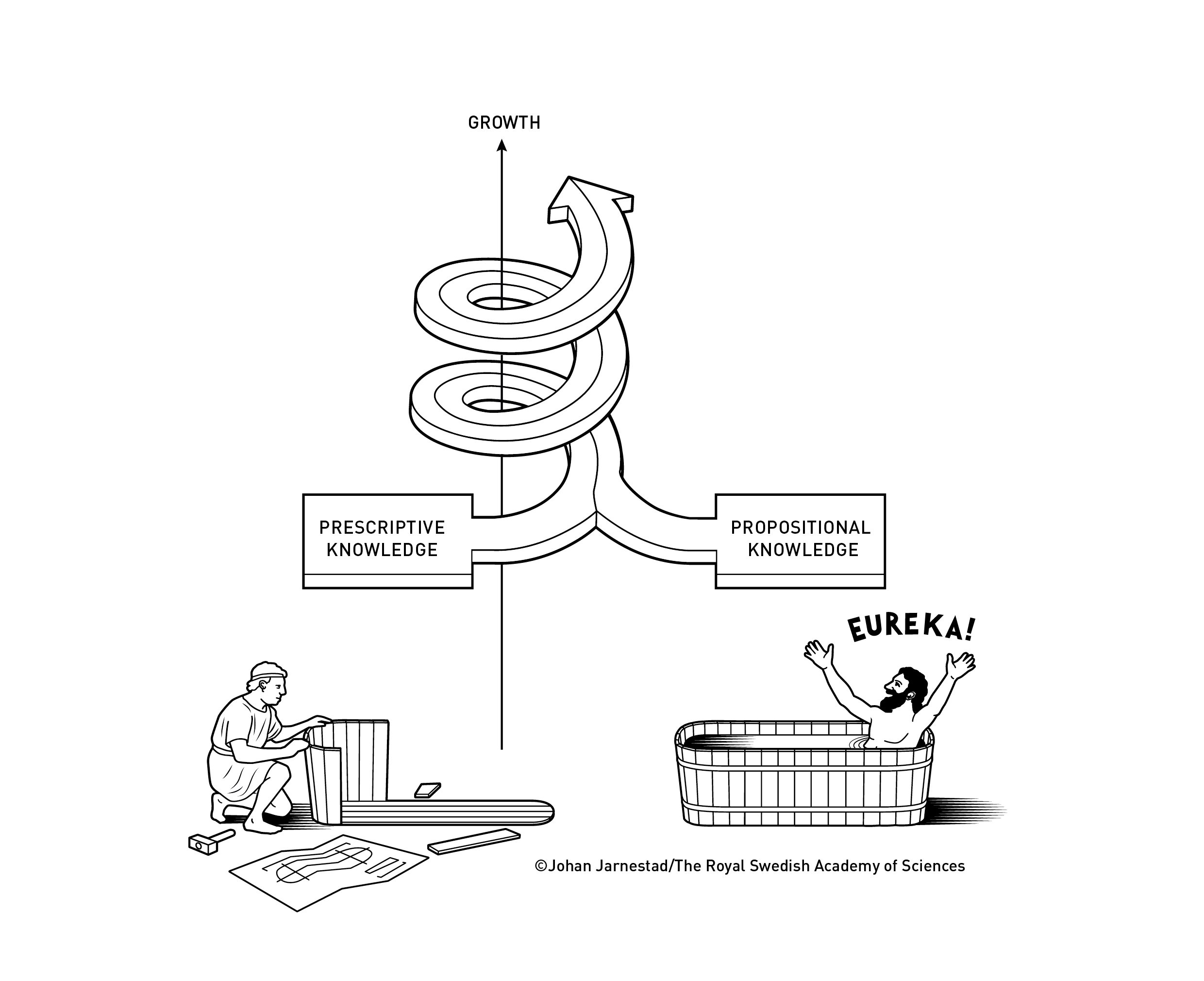For most of human history, economic life was largely defined by sustenance and stagnation. Discovery and innovation, like the wheel, fire, writing, or gupowder were few and far betweeen. It is only in the last two centuries that a new phenomenon took hold over the global economy: the emergence of sustained economic growth. The 2025 Nobel Memorial Prize in Economic Sciences honors three scholars—Joel Mokyr, Philippe Aghion, and Peter Howitt—whose research collectively explains this phenomenon, and what drives it.
Mokyr: The Prerequisites for Technological Progress
Awarded one half of the prize, Joel Mokyr's contribution lies in his deep analyses of economic history. He demonstrated that technological progress only became a self-generating, continuous process when society moved beyond empirical know-how to scientific understanding.
Before the Industrial Revolution, people often knew how to build a machine, which Mokyr calls prescriptive knowledge. While this allowed them to make practical applications for everyday life, he explained in his life's work that they lacked the scientific and mechanical understanding of why it worked, which he calls propositional knowledge. It is only after the Renaissance and Enlightenment in Europe that science as a concept emerged — and it became the engine of sustained growth.
Critically, he also identified the necessary cultural element for this to happen. A society must be intellectually open and willing to tolerate the inevitable disruption that new ideas bring. Without a culture that embraces change, innovation gets blocked by those who benefit from the status quo. An example is Japan, which modernized quickly in the late 19th century to become the innovation powerhouse it still is today, while China stagnated in the same period unwilling (and unable) to accept innovation, leading to its ‘century of humiliation’.

Aghion and Howitt: Formalizing Creative Destruction
The other half of the prize recognizes the mathematical formalization of creative destruction by Philippe Aghion and Peter Howitt. The theory was intuitively stated by Joseph Schumpeter in his landmark 1942 work, Capitalism, Socialism and Democracy. Creative destruction is the core mechanism of modern market economies. New products and technologies create immense value, but only by simultaneously destroying the market share, jobs, and capital of older, less efficient industries.
For example,
- Digital cameras killed film cameras, and companies (e.g. Polaroid) that failed to adapt closed down.
- Similarly streaming disrupted physical video rentals: Netflic adapted but Blockbuster collapsed.
In 1992, Aghion and Hewitt created a mathematical model to provide a rigorous, quantitative structure to this process of perpetual innovation. Their work shows that this continuous churn, is precisely what drives long-term growth in living standards, even though in the short term, there are many losers as old jobs disappear.
Impact on Global Economic Policy
By integrating the laureates’ historical perspective and mathematical rigour into a unified framework, one can see that innovation-driven economic growth is not inevitable but fragile, subject to social factors. To maintain growth and avoid stagnation, policymakers must focus on two main, contradictory challenges.
Incentivizing Creation | Managing Destruction |
|
|
Conclusion
The work of Mokyr, Aghion, and Howitt serves as a vital reminder that long-term prosperity is ultimately a function of continuous, often disruptive, technological change. Their insights are crucial for policymakers grappling with everything from the rise of Artificial Intelligence to climate change initiatives.
Importantly, the awarding of the Economics Nobel to a historian and two mathematicians underscores the vital role played by both STEM subjects and liberal arts in creating a complete framework.
Keywords: Nobel Economics Prize 2025, Innovation-Driven Economic Growth, Creative Destruction, Joel Mokyr, Philippe Aghion, Peter Howitt, Sustained Economic Growth, Technological Progress, Schumpeterian Growth, Economic Policy








